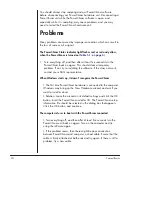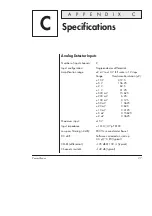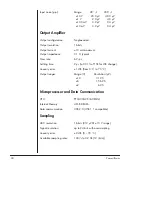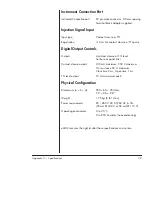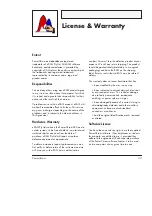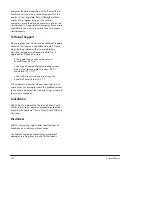
PowerChrom
19
A P P E N D I X A
A
Glossary
This glossary covers terms used in this manual.
General and specific computer terminology is
covered in the documentation that came with
your computer.
ADC
(analog-to-digital convertor). A device that
converts analog information into some
corresponding digital voltage or current.
amplitude
. The maximum vertical distance of a
periodic wave from the zero or mean position
about which the wave oscillates.
analog
. Varying smoothly and continuously
over a range. An analog signal varies
continuously over time, rather than changing at
discrete intervals.
analog input
. Refers to the analog input
connections on the Instrument Connection port.
These inputs are designed to accept up to ±10
volts. Inputs can be either single-sided or
differential.
analog output
. This refers to the analog output
connection on the Instrument Connection port.
The analog output provides a software-
controlled variable output (±10 V) that can be
used to control a peripheral device such as a
pump.
analysis
. When the recording unit is not
physically connected to the computer, the
PowerChrom software can be used to analyse
and manipulate existing files if the analysis
option is chosen.
connector
. A plug, socket, jack, or port used in
connecting one electronic device to another,
such as a recording unit to a computer (via a
cable, of course).
CPU
(central processing unit). A hardware
device that performs logical and arithmetical
operations on data as specified in the
instructions: the heart of most computers.
DAC
(digital-to-analog convertor). A device that
converts digital information into some
corresponding analog voltage or current. A
DAC drives the analog output on the unit.
DC offset
. The amount of DC (direct current)
voltage present at the output of an amplifier
when zero voltage is applied to the input; or
the amount of DC voltage present in a
transducer in its equilibrium state.




















